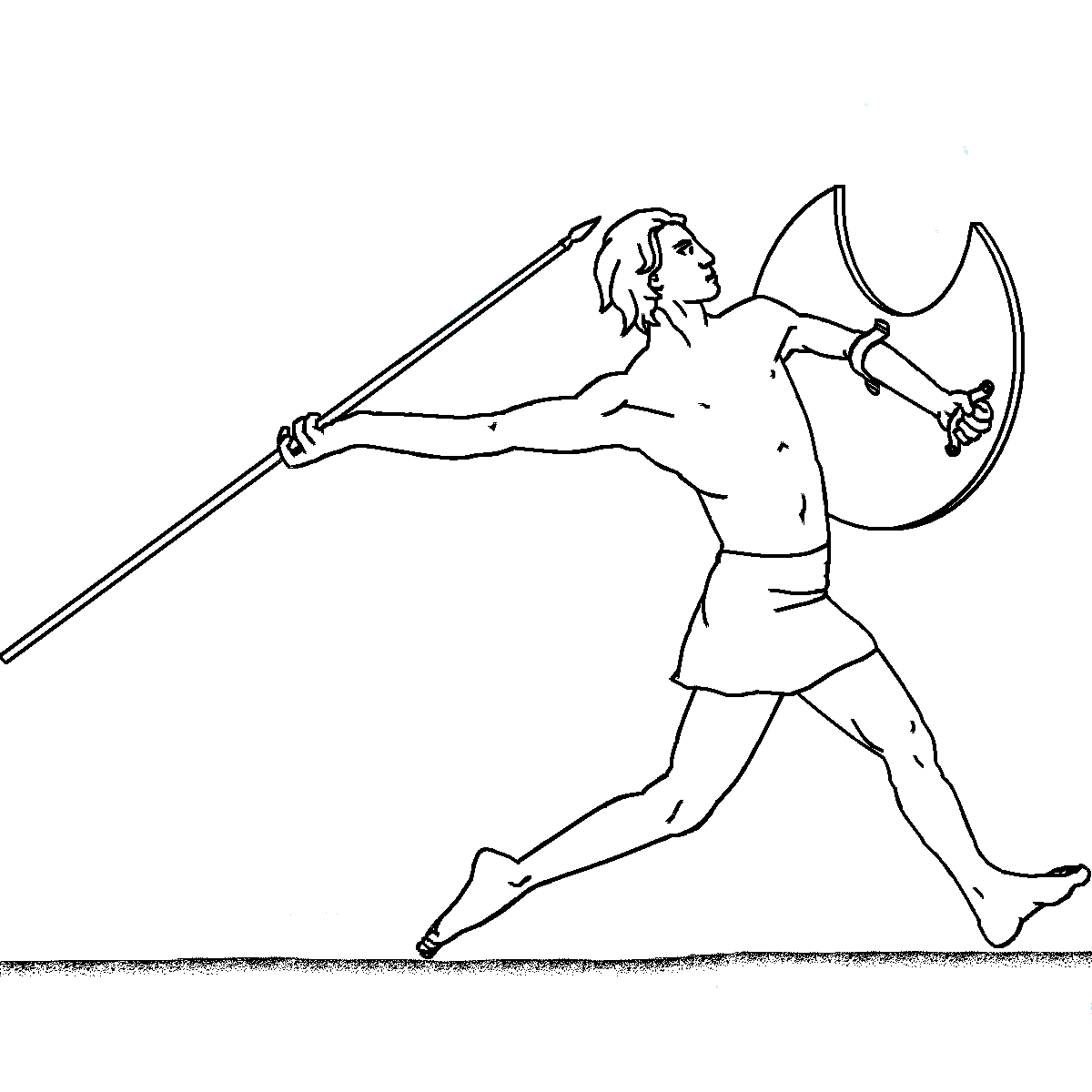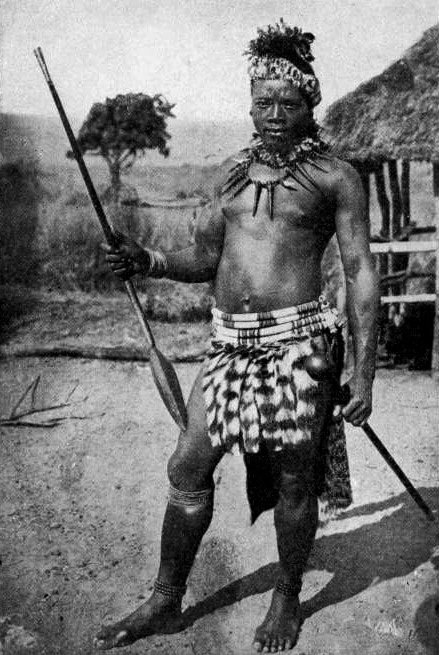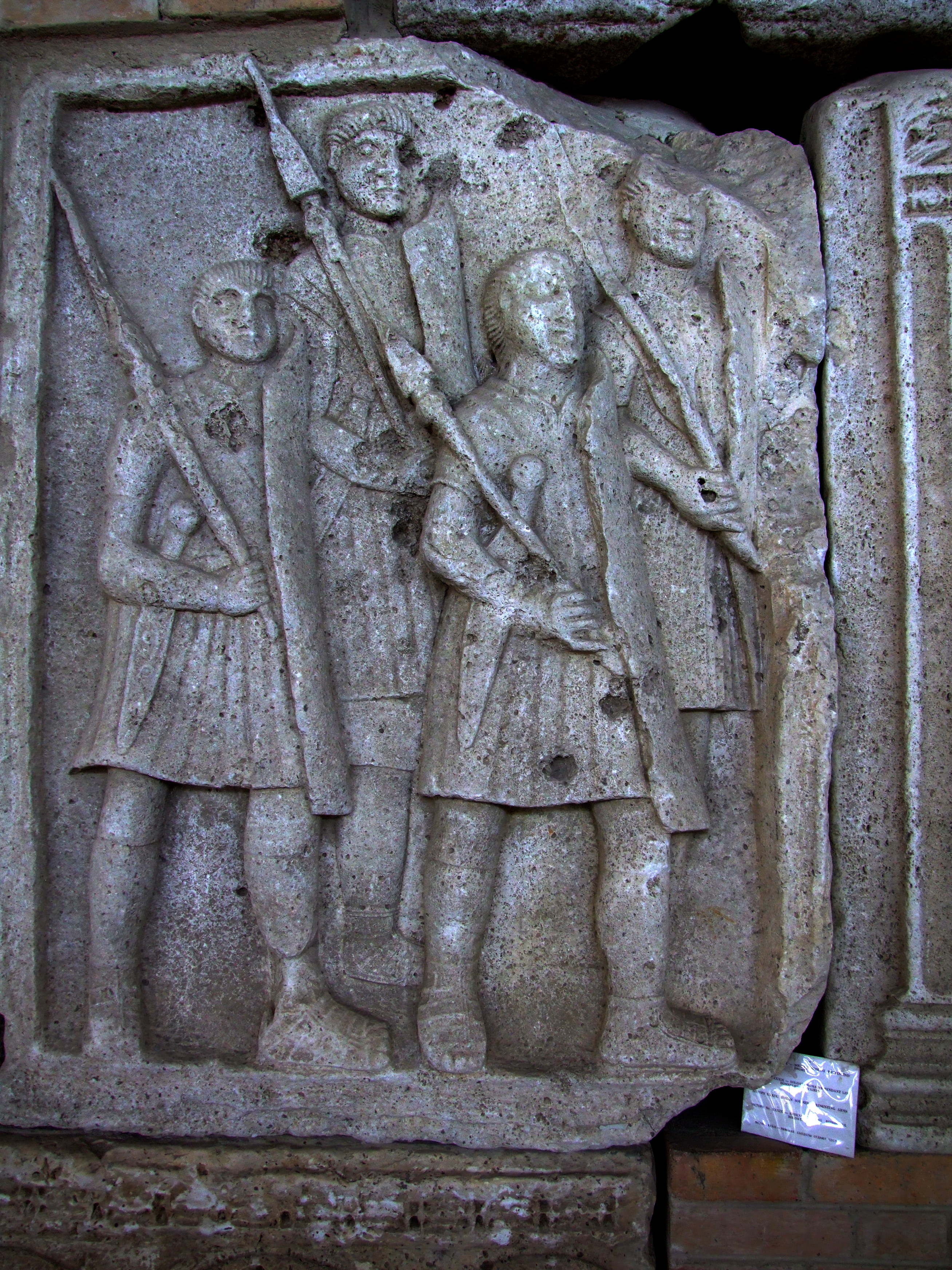|
Soliferrum
Soliferrum or Soliferreum (Latin: ''solus'', "only" + ''ferrum'', "Iron") was the Roman name for an ancient Iberian ranged pole weapon made entirely of iron. The soliferrum was a heavy hand-thrown javelin, designed to be thrown to a distance of up to 30 meters. In the Iberian language it was known as ''Saunion''. Design The soliferrum was forged from a single piece of iron which usually measured 1.5 to 2 meters in length and around one centimeter in diameter. This missile weapon had a narrow, barbed tip so it could pierce shields and armour. The tip of the soliferrum came in several forms. In its simplest form, it had only a sharpened tip but usually it had two small spikes or even more. These spikes had one or several hooks, so the weapon would be hard to extract after it had penetrated an enemy's body. The central part of the soliferrum was usually thickened to facilitate the grip of the weapon. Sometimes there were moldings of about ten centimeters long in the middle of the wea ... [...More Info...] [...Related Items...] OR: [Wikipedia] [Google] [Baidu] |
Ancient Weapons
This is a list of historical pre- modern weapons grouped according to their uses, with rough classes set aside for very similar weapons. Some weapons may fit more than one category (e.g. the spear may be used either as a polearm or as a projectile), and the earliest gunpowder weapons which fit within the period are also included. Offensive weapons Melee weapons Hand or fist weapons and fans Single-handed weapons not resembling a straight dagger blade, usually wielded without wrist action; often protects the forearm. * Bagh nakha, tiger claws (Indian) * Brass knuckles, knuckle dusters (European) * Cestus, bladed cestus, caestus, myrmex, sfere (Mediterranean) * Deer Horn Knives (Chinese) * Emeici (Chinese) * Finger knife (African) * Gauntlet (European) * Indian parrying weapon * Japanese fan, iron fan * Katar, suwaiya (कटार) (Indian) * Korean fan, mubuchae (무부채), tempered birch fan * Larim fighting bracelet, nyepel (African) * Maduvu, buckhorn parrying ... [...More Info...] [...Related Items...] OR: [Wikipedia] [Google] [Baidu] |
Iberians
The Iberians ( la, Hibērī, from el, Ἴβηρες, ''Iberes'') were an ancient people settled in the eastern and southern coasts of the Iberian peninsula, at least from the 6th century BC. They are described in Greek and Roman sources (among others, by Hecataeus of Miletus, Avienius, Herodotus and Strabo). Roman sources also use the term ''Hispani'' to refer to the Iberians. The term ''Iberian'', as used by the ancient authors, had two distinct meanings. One, more general, referred to all the populations of the Iberian peninsula without regard to ethnic differences ( Pre-Indo-European, Celts and non-Celtic Indo-Europeans). The other, more restricted ethnic sense and the one dealt with in this article, refers to the people living in the eastern and southern coasts of the Iberian Peninsula, which by the 6th century BC had absorbed cultural influences from the Phoenicians and the Greeks. This pre-Indo-European cultural group spoke the Iberian language from the 7th to the ... [...More Info...] [...Related Items...] OR: [Wikipedia] [Google] [Baidu] |
Javelins
A javelin is a light spear designed primarily to be thrown, historically as a ranged weapon, but today predominantly for sport. The javelin is almost always thrown by hand, unlike the sling, bow, and crossbow, which launch projectiles with the aid of a hand-held mechanism. However, devices do exist to assist the javelin thrower in achieving greater distance, such as spear-throwers or the amentum. A warrior or soldier armed primarily with one or more javelins is a javelineer. The word javelin comes from Middle English and it derives from Old French ''javelin'', a diminutive of ''javelot'', which meant spear. The word ''javelot'' probably originated from one of the Celtic languages. Prehistory There is archaeological evidence that javelins and throwing sticks were already in use by the last phase of the Lower Paleolithic. Seven spear-like objects were found in a coal mine in the city of Schöningen, Germany. Stratigraphic dating indicates that the weapons are about 400,000 ye ... [...More Info...] [...Related Items...] OR: [Wikipedia] [Google] [Baidu] |
Javelin
A javelin is a light spear designed primarily to be thrown, historically as a ranged weapon, but today predominantly for sport. The javelin is almost always thrown by hand, unlike the sling, bow, and crossbow, which launch projectiles with the aid of a hand-held mechanism. However, devices do exist to assist the javelin thrower in achieving greater distance, such as spear-throwers or the amentum. A warrior or soldier armed primarily with one or more javelins is a javelineer. The word javelin comes from Middle English and it derives from Old French ''javelin'', a diminutive of ''javelot'', which meant spear. The word ''javelot'' probably originated from one of the Celtic languages. Prehistory There is archaeological evidence that javelins and throwing sticks were already in use by the last phase of the Lower Paleolithic. Seven spear-like objects were found in a coal mine in the city of Schöningen, Germany. Stratigraphic dating indicates that the weapons are about 400,000 ... [...More Info...] [...Related Items...] OR: [Wikipedia] [Google] [Baidu] |
Assegai
An assegai or assagai (Arabic ''az-zaġāyah'', Berber ''zaġāya'' "spear", Old French ''azagaie'', Spanish ''azagaya'', Italian ''zagaglia'', Middle English ''lancegay'') is a pole weapon used for throwing, usually a light spear or javelin made up of a wooden handle and an iron tip. Area of use The use of various types of the assegai was widespread all over Africa and it was the most common weapon used before the introduction of firearms. The Zulu, Xhosa and other Nguni tribes of South Africa were renowned for their use of the assegai. ''Iklwa'' Shaka of the Zulu invented a shorter stabbing spear with a two-foot (0.61 m) shaft and a larger, broader blade one foot (0.3 m) long. This weapon is otherwise known as the ''iklwa'' or ''ixwa'', after the sound that was heard as it was withdrawn from the victim's wound. The traditional spear was not abandoned, but was used to range attack enemy formations before closing in for close quarters battle with the iklwa. This ... [...More Info...] [...Related Items...] OR: [Wikipedia] [Google] [Baidu] |
Falarica
Falarica, also Phalarica, was an ancient Iberian ranged pole weapon that was sometimes used as an incendiary weapon. Design The Falarica was a heavy javelin with a long, thin iron head of about 90 centimeters in length attached to a wooden shaft of about equal length. The iron head had a narrow sharp tip, which made the falarica an excellent armour-piercing weapon. The Iberians used to bind combustible material to the metal shaft of the weapon and use the falarica as an incendiary projectile. The incendiary javelin would hit the shields or siege works of the enemy often setting them ablaze. The falarica could also be launched by the use of spear throwers or siege engines to increase its range and velocity. the besieged were protected and the enemy kept away from the gates by the falarica, which many arms at once were wont to poise... when hurled like a thunderbolt from the topmost walls of the citadel, it clove the furrowed air with a flickering flame, even as a fiery meteor ... [...More Info...] [...Related Items...] OR: [Wikipedia] [Google] [Baidu] |
Javelin
A javelin is a light spear designed primarily to be thrown, historically as a ranged weapon, but today predominantly for sport. The javelin is almost always thrown by hand, unlike the sling, bow, and crossbow, which launch projectiles with the aid of a hand-held mechanism. However, devices do exist to assist the javelin thrower in achieving greater distance, such as spear-throwers or the amentum. A warrior or soldier armed primarily with one or more javelins is a javelineer. The word javelin comes from Middle English and it derives from Old French ''javelin'', a diminutive of ''javelot'', which meant spear. The word ''javelot'' probably originated from one of the Celtic languages. Prehistory There is archaeological evidence that javelins and throwing sticks were already in use by the last phase of the Lower Paleolithic. Seven spear-like objects were found in a coal mine in the city of Schöningen, Germany. Stratigraphic dating indicates that the weapons are about 400,000 ... [...More Info...] [...Related Items...] OR: [Wikipedia] [Google] [Baidu] |
Falarica
Falarica, also Phalarica, was an ancient Iberian ranged pole weapon that was sometimes used as an incendiary weapon. Design The Falarica was a heavy javelin with a long, thin iron head of about 90 centimeters in length attached to a wooden shaft of about equal length. The iron head had a narrow sharp tip, which made the falarica an excellent armour-piercing weapon. The Iberians used to bind combustible material to the metal shaft of the weapon and use the falarica as an incendiary projectile. The incendiary javelin would hit the shields or siege works of the enemy often setting them ablaze. The falarica could also be launched by the use of spear throwers or siege engines to increase its range and velocity. the besieged were protected and the enemy kept away from the gates by the falarica, which many arms at once were wont to poise... when hurled like a thunderbolt from the topmost walls of the citadel, it clove the furrowed air with a flickering flame, even as a fiery meteor ... [...More Info...] [...Related Items...] OR: [Wikipedia] [Google] [Baidu] |
Celts
The Celts (, see pronunciation for different usages) or Celtic peoples () are. "CELTS location: Greater Europe time period: Second millennium B.C.E. to present ancestry: Celtic a collection of Indo-European peoples. "The Celts, an ancient Indo-European people, reached the apogee of their influence and territorial expansion during the 4th century bc, extending across the length of Europe from Britain to Asia Minor."; . " e Celts, were Indo-Europeans, a fact that explains a certain compatibility between Celtic, Roman, and Germanic mythology."; . "The Celts and Germans were two Indo-European groups whose civilizations had some common characteristics."; . "Celts and Germans were of course derived from the same Indo-European stock."; . "Celt, also spelled Kelt, Latin Celta, plural Celtae, a member of an early Indo-European people who from the 2nd millennium bce to the 1st century bce spread over much of Europe."; in Europe and Anatolia, identified by their use of Celtic langu ... [...More Info...] [...Related Items...] OR: [Wikipedia] [Google] [Baidu] |
Pilum
The ''pilum'' (; plural ''pila'') was a javelin commonly used by the Roman army in ancient times. It was generally about long overall, consisting of an iron shank about in diameter and long with a pyramidal head, attached to a wooden shaft by either a socket or a flat tang. Design A ''pilum'' had a total weight of between , with the versions produced during the earlier Republic being slightly heavier than those produced in the later Empire. The weapon had a hard pyramidal tip, but the shank was sometimes made of softer iron. The softness could cause the shank to bend after impact and so render the weapon useless to the enemy. Some believe that the ''pilum'' was not meant to bend after impact but that bending came from improper handling/removal of the weapon when it became stuck in an object. If a ''pilum'' struck a shield it might embed itself, the bending of the shank would force the enemy to discard his shield as unusable without removing the ''pilum'', which would be t ... [...More Info...] [...Related Items...] OR: [Wikipedia] [Google] [Baidu] |
Falcata
The falcata is a type of sword typical of pre- Roman Iberia. The falcata was used to great effect for warfare in the ancient Iberian peninsula, and is firmly associated with the southern Iberian tribes, among other ancient peoples of Hispania. It was highly prized by the ancient general Hannibal, who equipped Carthaginian troops with it during the Second Punic War. Name It is unknown which name ancient Iberians gave to the weapon. ''Falcata'' is neither a native name nor one used in classical sources, but a 19th century term coined by historian Fernando Fulgosio to describe the shape of its blade. The term derivates from Latin ''falcatus'', meaning literally "falcon-shaped".Luis Silva, ''Viriathus and the Lusitanian Resistance to Rome 155-139 BC'', 2013 Classical vocabulary did have a sword named ''ensis falcatus'', but it was apparently meant to be either a falx or a harpe. In any case, the name caught on very quickly and is now firmly entrenched in the scholarly literature. ... [...More Info...] [...Related Items...] OR: [Wikipedia] [Google] [Baidu] |
Pilum
The ''pilum'' (; plural ''pila'') was a javelin commonly used by the Roman army in ancient times. It was generally about long overall, consisting of an iron shank about in diameter and long with a pyramidal head, attached to a wooden shaft by either a socket or a flat tang. Design A ''pilum'' had a total weight of between , with the versions produced during the earlier Republic being slightly heavier than those produced in the later Empire. The weapon had a hard pyramidal tip, but the shank was sometimes made of softer iron. The softness could cause the shank to bend after impact and so render the weapon useless to the enemy. Some believe that the ''pilum'' was not meant to bend after impact but that bending came from improper handling/removal of the weapon when it became stuck in an object. If a ''pilum'' struck a shield it might embed itself, the bending of the shank would force the enemy to discard his shield as unusable without removing the ''pilum'', which would be t ... [...More Info...] [...Related Items...] OR: [Wikipedia] [Google] [Baidu] |




